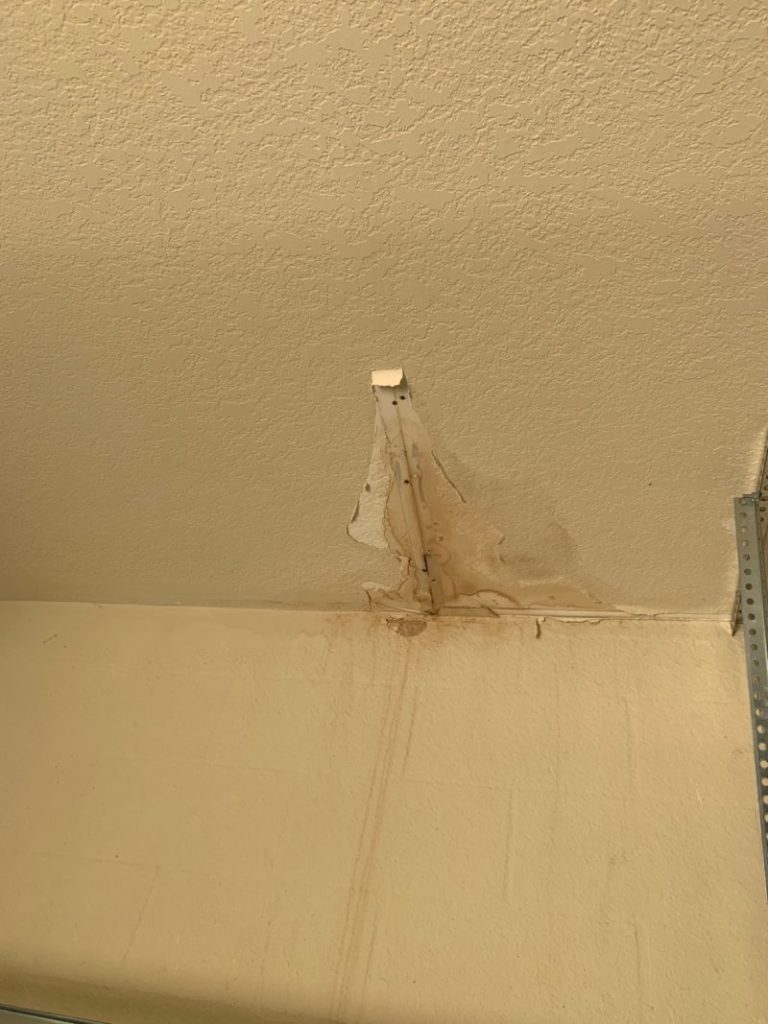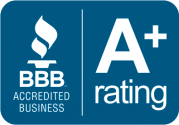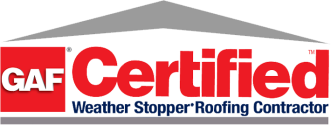
Every day, over 14,000 people in the US experience the pain of water damage in their homes. In other words, about 1 in 60 insured homes suffer from the consequences of water damage.
And according to reports, water damage is the second highest reason for all home insurance claims (29.4%). This is why you shouldn’t be surprised if your roof starts to leak, it can happen to any homeowner.
Roof leakage is a constant threat, but it isn’t a problem. The problems come when rook leaks are not addressed in a timely manner.
Rectifying a leaking roof early helps prevent further damage, ensuring you and your family are safe in your home. Not only this but identifying and repairing leaks in your roof will help protect the overall integrity of your home.
As experts in the roofing industry, we have seen many Florida homes lose their aesthetics to water damage.
This article explains five unmistakable signs of roof leakage in your homes. Let’s dive in:
What Are the Signs of a Leaking Roof
1. Stained Ceilings
When your roof starts to leak, one vivid sign you have is stained ceilings. You start to notice dark spots on your ceiling, which starts small and becomes large with time. The worst part of this is that it can destroy your ceilings and the items in your home. However, stains on the ceiling are easy to trace to the roof leaks, as the stains mean the leaks are usually not far from where the stains are seen.
If the roof leak is caught early enough and there is no cracking in your ceiling drywall, you can get rid of the stain with a little bit of bleach water.
2. Mold on External Walls
Mold on external walls are a surefire sign of roof leakage. They are a product of airborne moisture and fungi, and while they adversely affect your wall, they also affect your health.
Fungus is airborne. When rain falls, it moves from the roof, seeps into the wall, mixes with air, and then forms molds on your wall.
Hence, when you see molds or mildew on your external wall, it’s time to start searching for the leakage on your roof.
3. Dripping Sound from Your Attic
During rainfall, leakage doesn’t fall directly into homes. They are intermediaries of the ceiling and wooden structure. That’s why you should listen for dripping sounds in your attic and verify information quickly. If you confirm that water is dripping in your attic, even the tiniest amount, you need to schedule a roofer to assess the damage and repair it right away. Mid-Coast Roofing is a top-rated expert in detecting and repairing roof leaks.
4. Damaged Plumbing Vents
Plumbing vents are an indispensable part of your plumbing system. They help maintain proper air pressure in your plumbing pipes and flush out drainage water.
However, damaged plumbing vent boots can indicate a problematic roof, as they contribute to your roof’s integrity. Plumbing vent boots are commonly made of lead, plastic, and metal, which are prone to cracking. When they crack, water can seep into your home.
5. Damaged Shingles
Roof shingles are your building’s first line of defense against water damage. Without them, your house would fall to the elements within months. That’s why your roof shingles should be at 100% at all times.
But that’s impossible, as nothing is perfect at all times. Roof shingles develop faults, which are a surefire path to roof leakage problems. Hence, you must consistently inspect your roof shingles and replace faulty ones immediately. Your shingles have higher chances of damage when they are close to the end of their lifespan.
What to Do If Your Roof Leaks
“A problem well-defined is a problem half-solved.”
Charles Kettering was correct when he made this statement at least 76 years ago because you have solved half of your roof-leakage problem if you can identify the cause. That said, you don’t have to worry. You can help mitigate the problem before professionals arrive. Here are some steps you can take before inviting a professional roofing contractor in Florida:
- Place a container under that spot to catch the water
- Cover the leaking spot with tarp if you can access it
Can You Repair a Leaking Roof Yourself?
While there some repairs you may be able to carry out on your own, we don’t recommend repairing a leaking roof on your own due to two major reasons. One, you don’t want to risk your life since you lack expertise in repairing roofs. Two, you don’t want to cause more damage to your roof. It’s always best to call a professional roofer, like Mid-Coast Roofing, to properly assess and repair your roof correctly.
Frequently Asked Questions
How Do You Detect a Roof Leak?
Detecting a roof leak means finding spots where water damage is possible in your home/property.
Here are common signs you can use to detect roof leaks in your home:
- Stained ceilings and walls
- Mold on external walls
- Damaged shingles
- Shiners in your roof
- Damaged flashes
What Are the Signs of a Bad Roof?
The signs of a bad roof aren’t hard to detect. They damage your home and increase your energy bills. These signs point to a bad roof:
- Missing shingles
- Missing or damaged flashing
- Problems in your attic
- Excessive granules of shingles in your gutters
What Is a More Common Area for a Roof to Leak?
The most common area for roof leakage is around the vents. For example, where the shingles and vents meet. Usually, roofers use flashing to seal the area around the vents. But the flashing wears down with time, and water may find a way into the home.
Conclusion
Roof maintenance is part of owning a home, and it isn’t abnormal for your roof to leak during the rainy season. All you have to do is keep an eye out for any signs of a leaky from and call a roofer if you suspect there is a problem.
While you can identify the problems with the signs of a leaking roof in this article, we highly recommend letting a professional do the job. When you hire a professional roofer like Mid-Coast Roofing to fix your leaky roof, you can rest assured that it will will be repaired right the first time. We guarantee our workmanship and your satisfaction. You can schedule a free estimate here or call us at (941) 780-8713.







